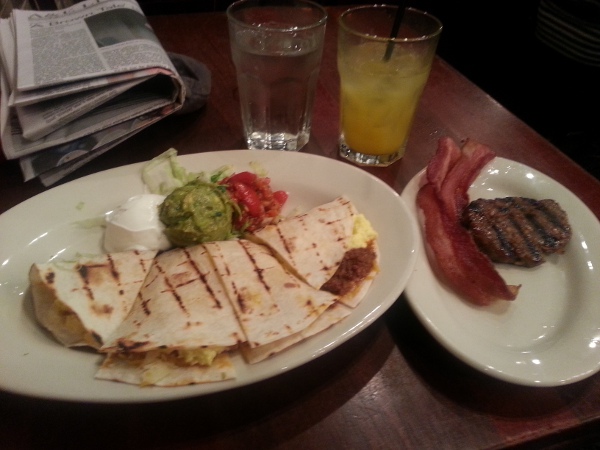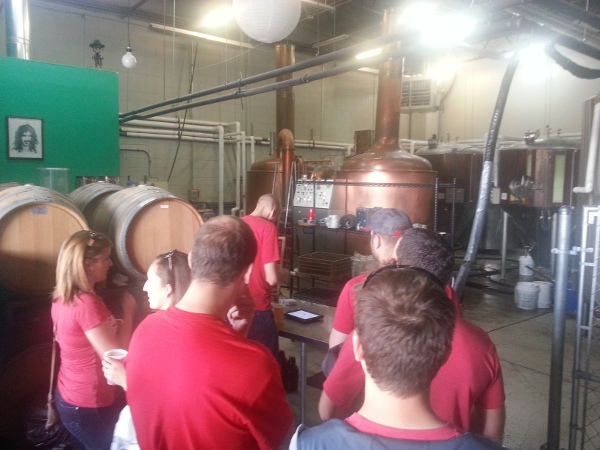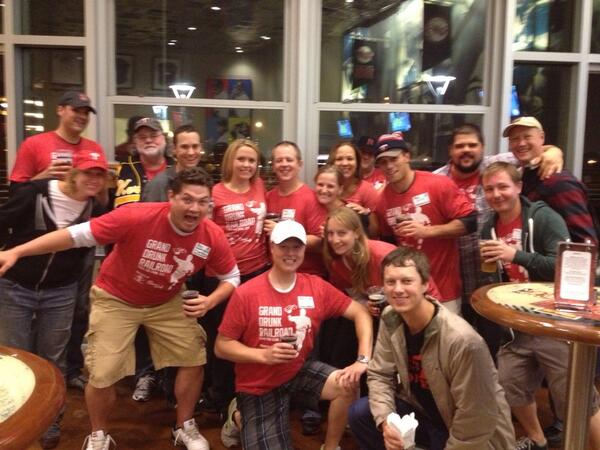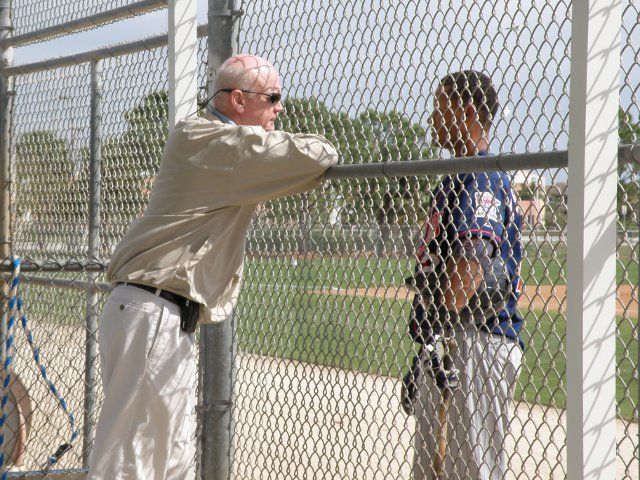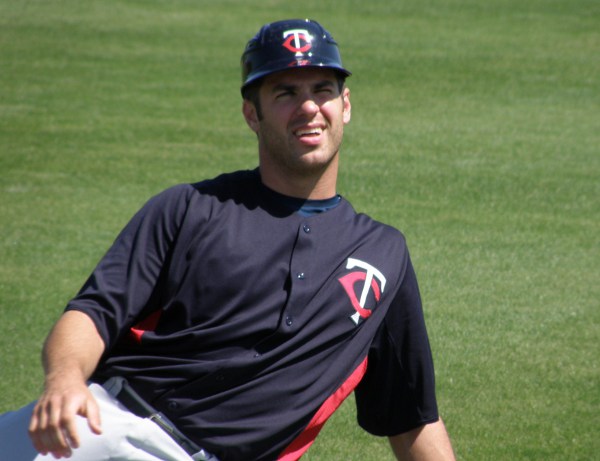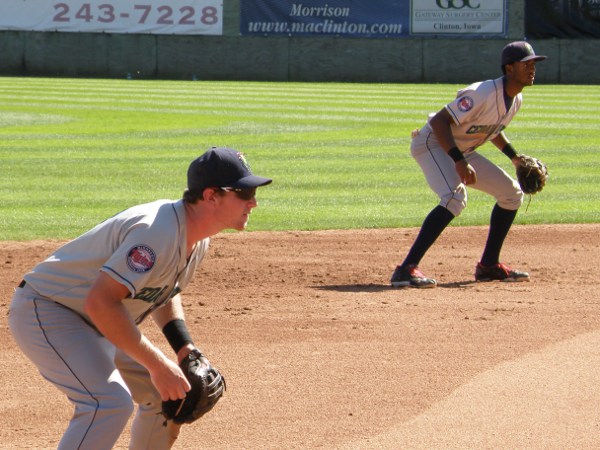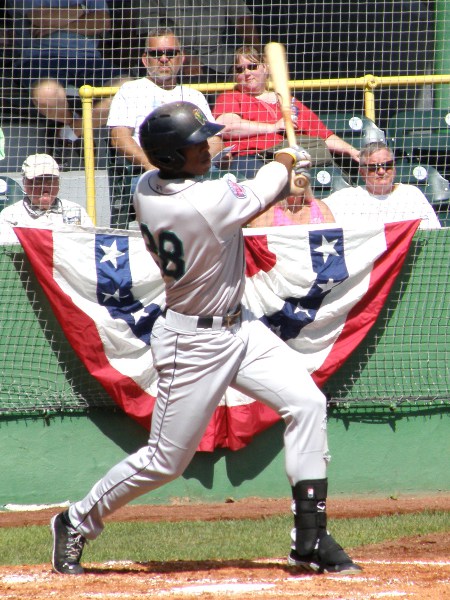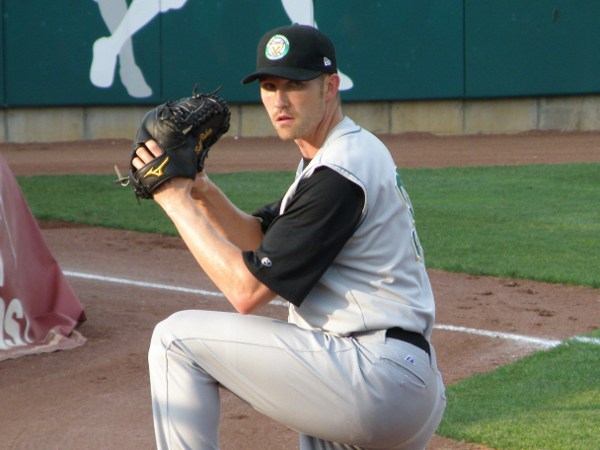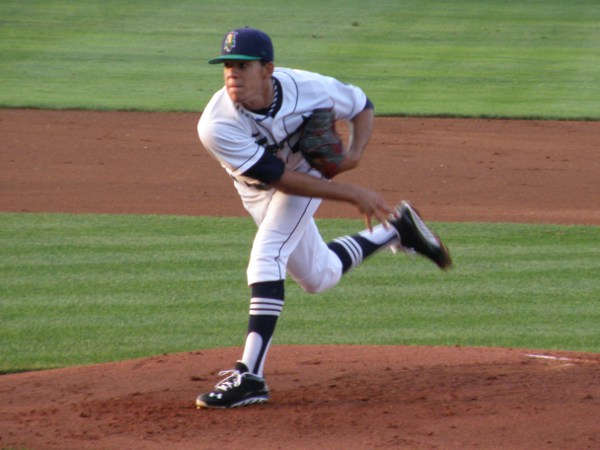One of the unique things about Class A minor league baseball is that the season is divided in to two halves. The format allows teams, such as the Kernels, that have strong first halves of the season to qualify for postseason play at the mid-point of the season. It also gives teams that struggle early a chance to start over with a clean slate for the second half.
The format benefits teams that experience significant roster turnover that’s common among Class A affiliated teams.
Sometimes, it also allows players that get off to a slow start to start over and salvage their seasons, not to mention their prospect status in the eyes of the organizational scouts that will largely determine their futures in professional baseball.
Cedar Rapids Kernels pitcher Hudson Boyd is one such player who has benefited from the chance to demonstrate improvement and versatility in the second half of the Kernels’ 2013 season.
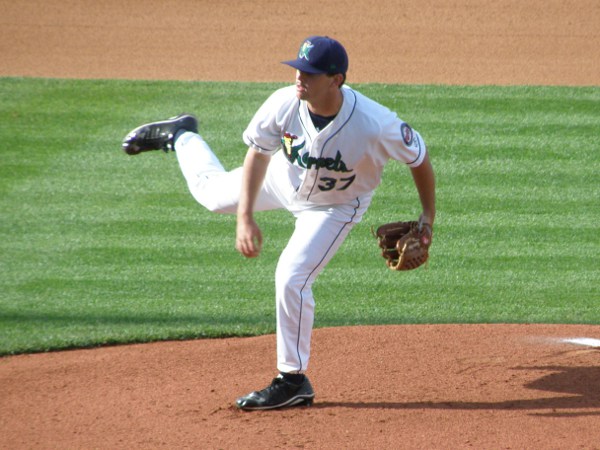 Boyd was selected in 2011 by the Minnesota Twins as a supplemental first round pick (55th pick overall) in the First Year Player Draft following his senior year of high school at Bishop Verot High School in Fort Myers, Florida.
Boyd was selected in 2011 by the Minnesota Twins as a supplemental first round pick (55th pick overall) in the First Year Player Draft following his senior year of high school at Bishop Verot High School in Fort Myers, Florida.
He had a scholarship offer to play baseball at the University of Florida, but ultimately signed with the Twins for a reported $1 million bonus and reported for his first season of professional baseball in 2012 at the Twins’ spring training facility in his home town of Fort Myers.
The right-hander weighed 275 pounds the summer after graduating from high school in 2011, according to one Fort Myers media report. The Twins made no secret of their feelings that Boyd would need to work himself in to better shape to survive the long seasons inherent in professional baseball and Boyd had already trimmed several pounds by the time he was pitching for Elizabethton a year ago for the Twins’ Rookie level team there.
This spring, Boyd was listed at just 225 pounds spread over his 6’ 2” frame when he opened the season in the Kernels’ starting rotation.
The new look didn’t translate in to instant success, however.
In the first half of the season, Boyd posted a 1-4 record for the Kernels in twelve starts, with a 6.56 ERA. Hitters knocked Boyd around to the tune of a .284 batting average.
“Yeah, I think I got a little too obsessed with (dropping weight),” Boyd said in an interview over the past weekend. “I think I was a little too light. I noticed my fastball (velocity) starting to drop.”
In his first start of the second half of the season, on the road against the Wisconsin Timber Rattlers, Boyd went just five innings, giving up five earned runs on eight hits, while walking six batters and striking out just one. While Boyd was credited with the win as the Kernels topped Wisconsin 13-9, he was pulled from the rotation after that game and began working out of the Cedar Rapids bullpen.
Since that time, in eleven relief appearances covering 21 1/3 innings of work, Boyd has thrown to a 1.69 ERA out of the bullpen, while striking out 16 hitters and holding batters to a .208 batting average.
That turnaround alone would be quite a story, but the story doesn’t end there.
With several of the Kernels’ starting pitchers nearing innings limits imposed by the Twins organization, the club’s pitching coach, Gary Lucas, has been faced with a need to pull some of the those pitchers from the rotation as the regular season winds to a close. That meant Lucas would need some members of his bullpen to replace those starters in the rotation.
Boyd got the news a couple of weeks ago that he was going to be re-inserted in to the starting rotation. The news came as a bit of a surprise, according to Lucas, but Boyd has taken the switch in stride.
“Whatever gives us the best chance to win,” Boyd said, “I was down with that.”
His first game back in the rotation was a forgettable effort where he failed to survive the third inning, but since that game, he’s steadily improved.
On Friday, Boyd threw seven strong innings against the Quad Cities River Bandits, the team the Kernels will be facing in the first round of the Midwest League Playoffs beginning Wednesday, September 4. Boyd gave up just three runs on four hits and a pair of walks on the night, while striking out four.
Boyd seemed more comfortable than he was during most of his early-season starts.
“I was able to get through seven, which was nice. Just trying to throw a lot more strikes than I was early in the year,” said Boyd.
Boyd indicated he has also made some adjustments to his preparation process. “Being in the bullpen, I think I learned some things I didn’t really need to do. I kind of have a better routine and it hasn’t been that big of an adjustment to get back in to it.”
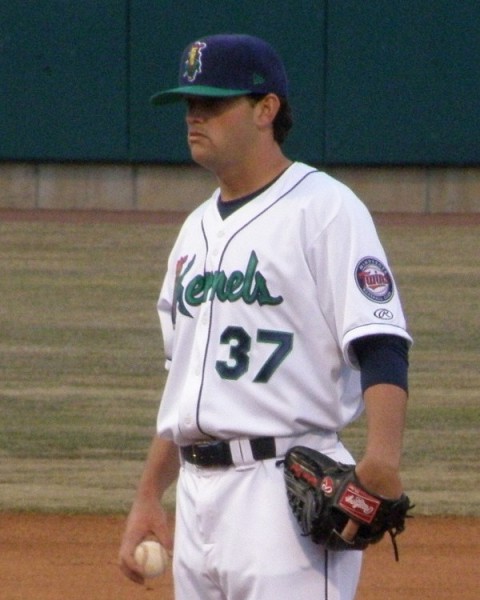 Boyd has been on the Kernels’ roster since Opening Day in April and, as has been the case with most of his team mates, he was quick to praise the local fan base.
Boyd has been on the Kernels’ roster since Opening Day in April and, as has been the case with most of his team mates, he was quick to praise the local fan base.
“It’s been pretty nice. The fans up here are great,” said Boyd. “They’ve been really supportive of our team all year, so it’s been pretty fun to see the big packed crowds we get. I’ve definitely pitched in front of more people up here than I ever have in my life. So it’s been a fun year.”
Still, nobody could fault Boyd for being anxious for a promotion to the Class high-A Fort Myers Miracle. Everyone likes the look of the next rung on the organizational ladder, but that’s particularly the case when the next rung means getting to play in your home town.
“Yeah, the next step up for us is where I’m from,” Boyd admitted. ”It’s where I live in the off-season. So, the next step up, I’ll just be going home.”
Don’t look for Boyd to drop more weight as he prepares for next year, however. In fact, Boyd may look to put back on some of the weight he shed a year ago.
If he does add weight, it will be, “good weight,” assured Boyd. “I’m more looking to put it on in my legs than anything – just trying to get a lot stronger in my legs.”
This has been the 20-year-old’s first exposure to a full season of professional baseball, giving Boyd a sense of what his body needs to be prepared to endure. “Now, I know what it feels like in August, so I have something to prepare for,” said Boyd.
It certainly has not been the kind of season a consensus top 20 Twins prospect might have been wishing for coming in to the season, but he’s accomplished at least one of his goals coming in to the year.
Boyd’s fastball has always been highly regarded and scouts have rated his breaking ball as potentially a “plus” pitch, but coming in to the year, Boyd was determined, in his words, “to have a better change-up than I did last year. I feel like I reached that one. I feel like I’ve got a pretty good change-up now.”
Adding an effective third pitch to his repertoire is important for any pitching prospect, but critically important for a pitcher with designs on being a future member of a Major League starting rotation.
Of course, there are some goals Boyd hasn’t attained. Coming in to the season, he hoped to throw about 130 innings during the year, “but I don’t think I’m going to get there,“ Boyd conceded.
“One of the goals I had was to throw a complete game,” added Boyd. “That’s still attainable.”
But then there’s the big goal.
“Hopefully, we’ll win the championship,” said Boyd. “That will be three rings in three years for me.”
Boyd is among a number of Kernels players this season that were part of the Appalachian League championship team at Elizabethton last year.
The year before that, Boyd’s high school team won the Florida state championship. Boyd pitched his team through the semi-final game and in to the championship. In the finals, Boyd found another way to contribute.
“Won it on a walk-off. I had the walk-off,” Boyd said with a smile.
So if fate found Boyd pitching for a National League team someday, would he look forward to an opportunity to swing the bat again?
“As long as they only throw fastballs. I wasn’t too fond of those curve balls.”
Boyd said he’d like to get a chance to start in the postseason, yet added, “but if they move me back to the bullpen, I’m comfortable doing that, too.”
The first two rounds of the Midwest League playoffs are only best two out of three games. That means that a number of the Kernels’ current rotation, including Boyd, won’t get opportunities to start unless the Kernels progress to at least the second round.
Jose Berrios and Brett Lee will start the Kernels’ first two postseason games and Tim Atherton will get the call if there’s a game three in the first round.
Boyd will be back to bullpen duty in round one, but could still get a start in the second round if the Kernels advance. – JC

